2014
Type of resources
Topics
Keywords
Contact for the resource
Provided by
Years
Formats
Representation types
Update frequencies
Scale
-
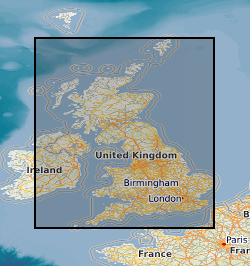
This national digital GIS product produced by the British Geological Survey indicates the potential for leakage to have a negative effect on ground stability. It is largely derived from the digital geological map and expert knowledge. The GIS dataset contains seven fields. The first field is a summary map that gives an overview of where leakage may affect ground stability. The other six fields indicate the properties of the ground with respect to the extent to which hazards associated with soluble rocks, landslides, compressible ground, collapsible ground, swelling clays and running sands will be increased due to leakage. The data is useful to asset managers in water companies, local authorities and utility companies who would like to understand where. and to what extent, leaking underground pipes or other structures may initate or worsen ground stability.
-
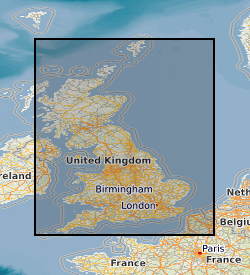
The DiGMap Plus dataset is a series of GIS layers describing the engineering, geochemical and geophysical properties of geological materials from the base of pedological soil down to c. 3m depth (ie the uppermost c.2m of geology). These deposits display a variable degree of weathering, but still exhibit core characteristics relating to their lithologies. The 'Resistivity' dataset covers England, Scotland and Wales and characterises the material resistivity (based on modelled distributions of clay and moisture content, to 2m depth.
-
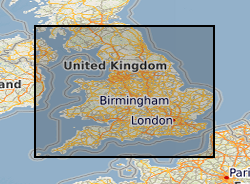
These maps provide an overview, at the national scale, of the spatial relationships between principal aquifers and some of the major shale and clay units in England and Wales. The data comprises a series of occurrence maps shows the distribution of rock units that form the principal aquifers and some major shale and clay units in England and Wales. In addition, a series of separation maps show the vertical separation between pairs of shales or clays and overlying aquifers. If shale gas resources are to be developed in the UK, the implications for groundwater will need to be considered as part of any risk assessment. A step in such an assessment will be to understand and quantify the spatial relationships between the potential shale gas source rocks (including both shales and some clay units) and overlying aquifers. The datasets used to produce the aquifer maps, the shale and clay occurrence maps and the separation maps are available to download for your own use. As with other BGS data sets available for download, this will enable you to work offline to develop your own systems and methodologies using BGS data. The data used to produce the aquifer, shale and clay maps are available below as ESRI GIS and KML files.
-
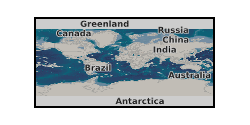
The dataset comprises scanned images of maps and aerial photographs of the Falkland Islands. The original maps are printers films and final paper printed originals of Falkland Islands OS maps, compiled for the Falkland Islands Government and the Foreign and Commonwealth Office by the Overseas Directorate of the Ordnance Survey. The Falkland Islands Government retains copyright interest in the maps. There are no access or usage constraints for BGS staff for BGS purposes. The field slips of geological maps were compiled by BGS under contract to the Falkland Islands Government. Copyright remains with the Falkland Islands Government , but there are no access or usage constraints for BGS staff for BGS purposes. Access to both datasets are restricted to BGS staff.
-
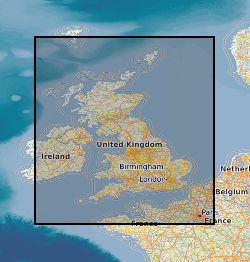
The Bedrock summary lithologies dataset is digital geological map across the bulk of the UK Continental Shelf (UKCS), for areas up to a water depth of 200m, which groups the bedrock lithologies (rock types) into classes based on similar engineering geology characteristics. The map is derived from the 1:250,000 scale digital bedrock map of the UKCS, called DiGRock250k, which is available separately from the BGS. The map was produced in 2014 in collaboration with, and co-funded by, The Crown Estate as part of a wider commissioned project to assess seabed geological constraints on engineering infrastructure across the UKCS. The divisions on the map combine the bedrock formations into 8 classes (with several subdivisions) of similar strength and lithological variability, each with a ‘Category’ title that summarises their main lithological character: Class1 – Igneous; Class 2 - Tertiary Sandstone and Limestone; Class 2.5 - Tertiary Sandstone and Limestone Interbedded; Class 3 - Tertiary Mudstone; Class 4 - Mesozoic Sandstone and Limestone; Class 4.5 - Mesozoic Sandstone and Limestone Interbedded; Class 5 - Mesozoic Mudstone; Class 6 – Chalk; Class 7 – Metamorphic; Class 8 - Palaeozoic Sedimentary. The data are held by the BGS as an ESRI ArcGIS Shapefile.
-
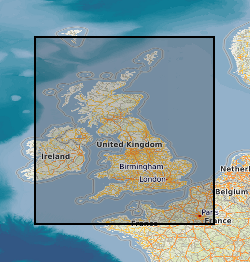
The Quaternary deposits summary lithologies dataset is a digital geological map across the bulk of the UK Continental Shelf (UKCS), for areas up to a water depth of 200 m, which groups the deposits into classes based on similar engineering geology characteristics. The map is derived from (unpublished) BGS 1:1,000,000 scale Quaternary digital geological mapping, so is effective at that scale. The map was produced in 2014 in collaboration with, and co-funded by, The Crown Estate as part of a wider commissioned project to assess seabed geological constraints on engineering infrastructure across the UKCS. The divisions on the map combine the Quaternary deposits into 7 categories of similar strength and lithological variability, each with a ‘Category’ title that summarises their main lithological character: diamict; firm to hard interbedded (layered); firm to hard mud; sand and gravel; soft interbedded; soft mud; undifferentiated. These categories can be used as a basis for assessing, in conjunction with a range of other geological factors, the geological constraints on engineering structures at or close to the seabed. The data are held by the BGS as an ESRI ArcGIS Shapefile.
-
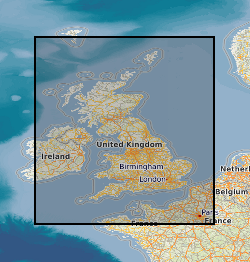
The Quaternary deposits thickness dataset is a digital geological map across the bulk of the UK Continental Shelf (UKCS), for areas up to a water depth of 200m, which shows the thickness of the deposits over bedrock in three categories: <5m, 5-50m, and >50m Quaternary cover. These depth bands were picked because they represent the horizons that have impact on offshore infrastructure deployment. The map is derived from (unpublished) BGS 1:1000000 scale Quaternary digital geological mapping. The map was produced in 2014 in collaboration with, and co-funded by, The Crown Estate as part of a wider commissioned project to assess seabed geological constraints on engineering infrastructure across the UKCS. The data are held by the BGS as an ESRI ArcGIS Shapefile.
-
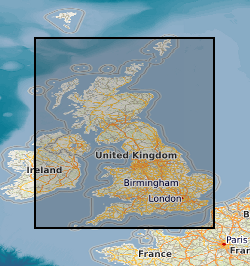
Scanned images of seismic phase data sheets containing phase readings, phase arrival times, amplitude data, magnitude data and derived source information like hypocentres (locations), fault plane solutions etc for earthquakes recorded by BGS seismic stations. The data is in the format used by the location program HYPO71 (Lee & Lahr, 1975) which was the most used program for local earthquakes.
-
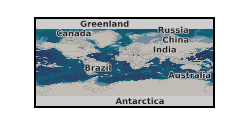
The data consists of a spreadsheet containing rheology data for 39 samples of syrup, containing air bubbles and/or spherical glass particles. These data were used by Truby et al. (2014) to support a model for the rheology of a three-phase suspension. Each sample was placed in the rheometer (concentric cylinder geometry), and the stress was stepped up and then down, taking a measurement of strain rate at each step. Further details of the experiments may be found in Truby et al. (2014). NERC grant is NE/K500999/1. Co-author working with a NERC grant, NE/G014426/1.
-

Aqueous amine scrubbing was originally developed for natural gas treatment and is currently considered to be the current best available technology for post-combustion capture (PCC) of CO2 from both pulverised fuel (PF) and natural gas combined cycle (NGCC) power plants. A major issue is the severe thermo-oxidative degradation of alkanomaine solvents that occurs in PCC compared to natural gas processing, with the problem being compounded by the presence of acid gases that lead to the formation of heat stable salts (HSS). The accumulation of degradation products is known to reduce CO2 capture efficiency and cause excessive foaming and fouling and unacceptably high corrosion rates. Current measures to compensate for degradation involves purging spent solvent solution for reclaimation, makeup with fresh amine and the addition of anti-foam and oxidation/corrosion inhibitors. Reclaimer technologies based on distillation, ion-exchange and elecrodialysis have been developed to deal primarily with HSS where distillation has the advantage of removing both the HSS and their anions (i.e. formate and acetate). However, these technologies do not deal with the majority of the other degradation products, particularly those arising from thermal and oxidative degradation. Further, it has generally recognised that MEA forms high boiling polymeric material where N-(2-hydroxyethyl)-ethylenediamine (HEEDA), in particular, may continue to degrade in the presence of CO2 to form longer substituted ethlyenediamines. This proposal has been prompted by our extremely promising preliminary results that the thermal and oxidative degradation of an amine polymer (polyethyleneimine) can largely be reversed using both hydrogenation and hydrothermal (hydrous) treatments. We used non-catalytic hydropyrolysis and hydrous pyrolysis treatments at temperatures below 250oC which were clearly effective in reducing oxygen functionalities without causing any degradation of the polymer chain. The challenge is to partially reduce degraded amines to hydroxyamines and also, for polymeric forms, to induce some hydrogenolysis to reduce chain lengths. Hydrous pyrolysis has the potential advantage of not directly requiring hydrogen with water being the hydrogen source. Judicious choice of catalysts provides selectivity for hydrogenation and hydrogenolysis and research on amine degradation in natural gas sweetening has shown degradation products, such as N,N-bis(2-hydroxy-ethyl)piperazine and N,N,N-tris(2-hydroxyethyl)ethylenediamine, can be converted back to hydroxyamines by a hydrotreating reactions . •Directly targeting a high research priority identified by the RAPID Handbook, the proposed research aims to investigate novel reductive approaches for rejuvenating spent amine solutions from PCC plants, namely selective catalytic hydrotreatments at modest temperatures and H2 pressures and hydrous pyrolysis (hydrothermal conversion). The specific objectives are: 1.To apply the hydrogenation/ hydropyrolysis and hydrothermal treatments to individual compounds, including 1-(2-hydroxyethyl)-2-imidazolidone (HEIA), HEEDA, .N-(2-hydroxyethyl)acetamide and N-methylformamide 2.Based on the model compound results, to conduct experiments on actual fractions from degraded amine solvents, notably the residues from distillation containing HSS and the compounds targeted above; and 3.To use the results to define the overall benefits hydrogenation, hydropyrolysis and hydrothermal treatments in solvent rejuvenation and a basis for planning the subsequent research needed to take forward these new treatments, in terms of identifying how these treatments can best be conducted continuously. Grant number: UKCCSRC-C2-189.
 BGS Data Catalogue
BGS Data Catalogue